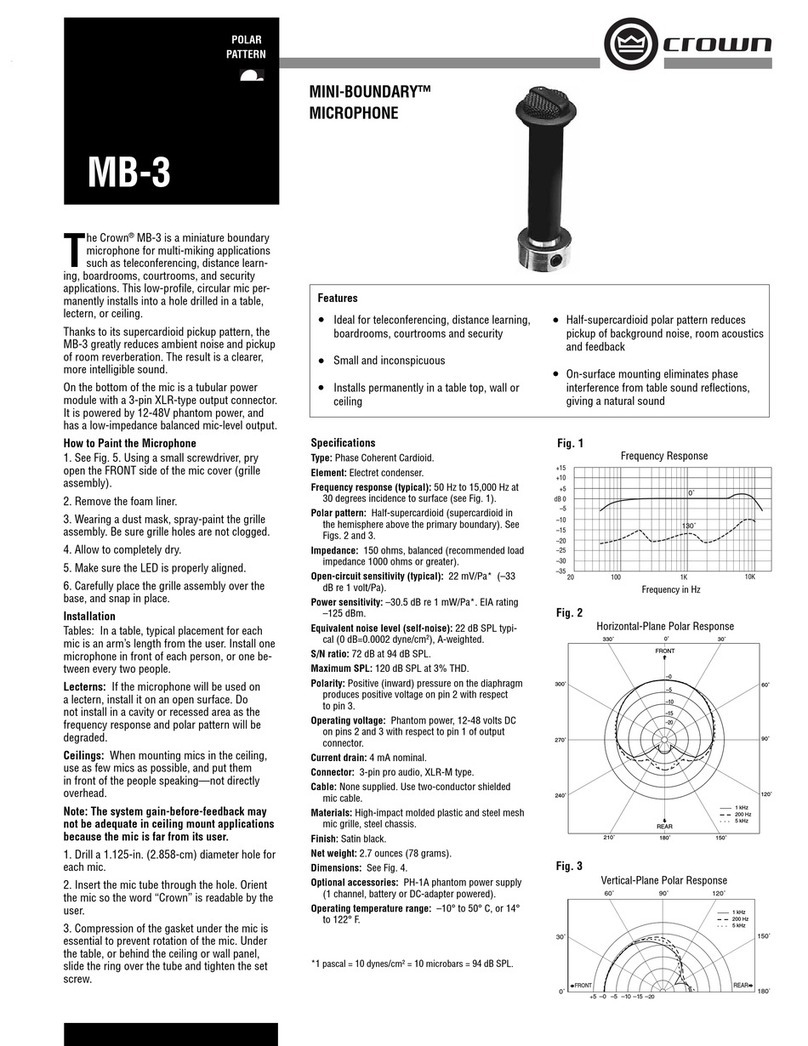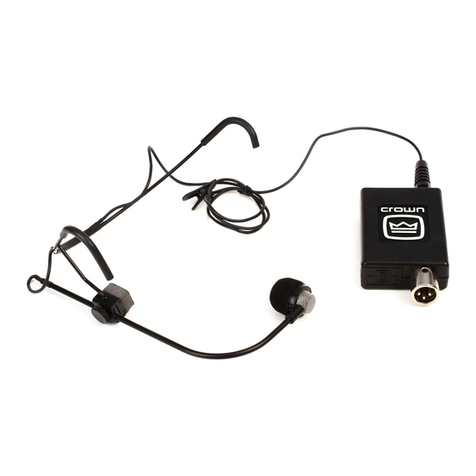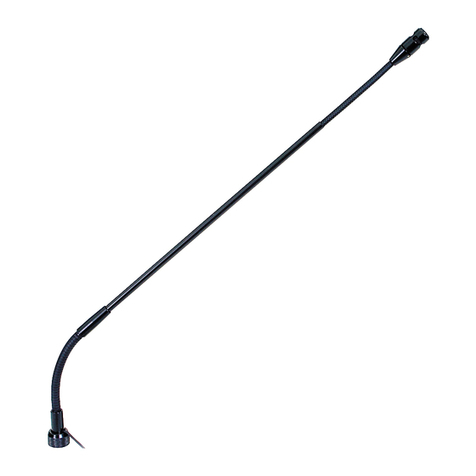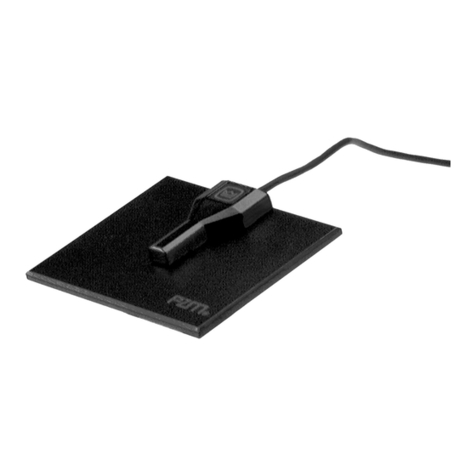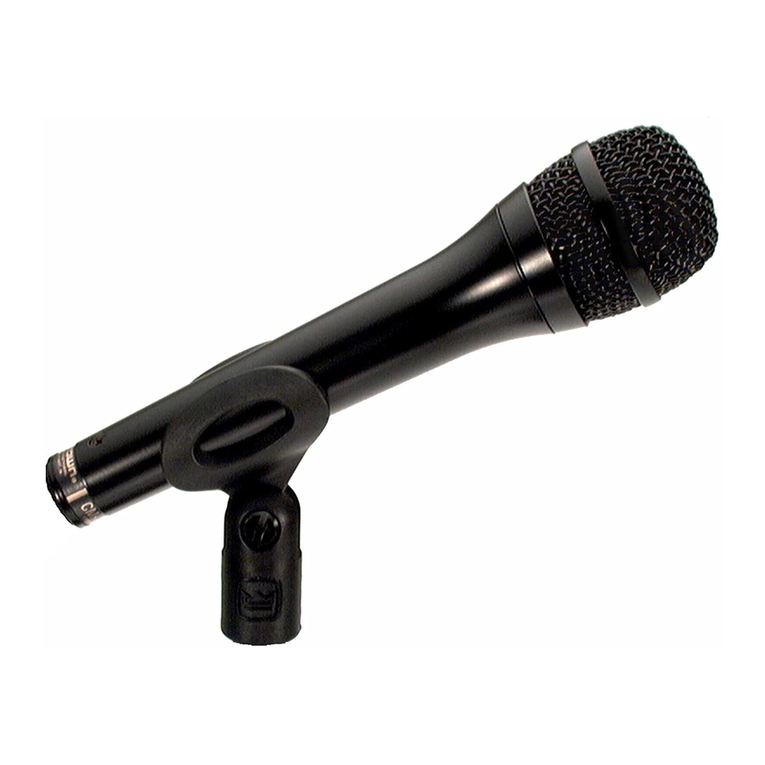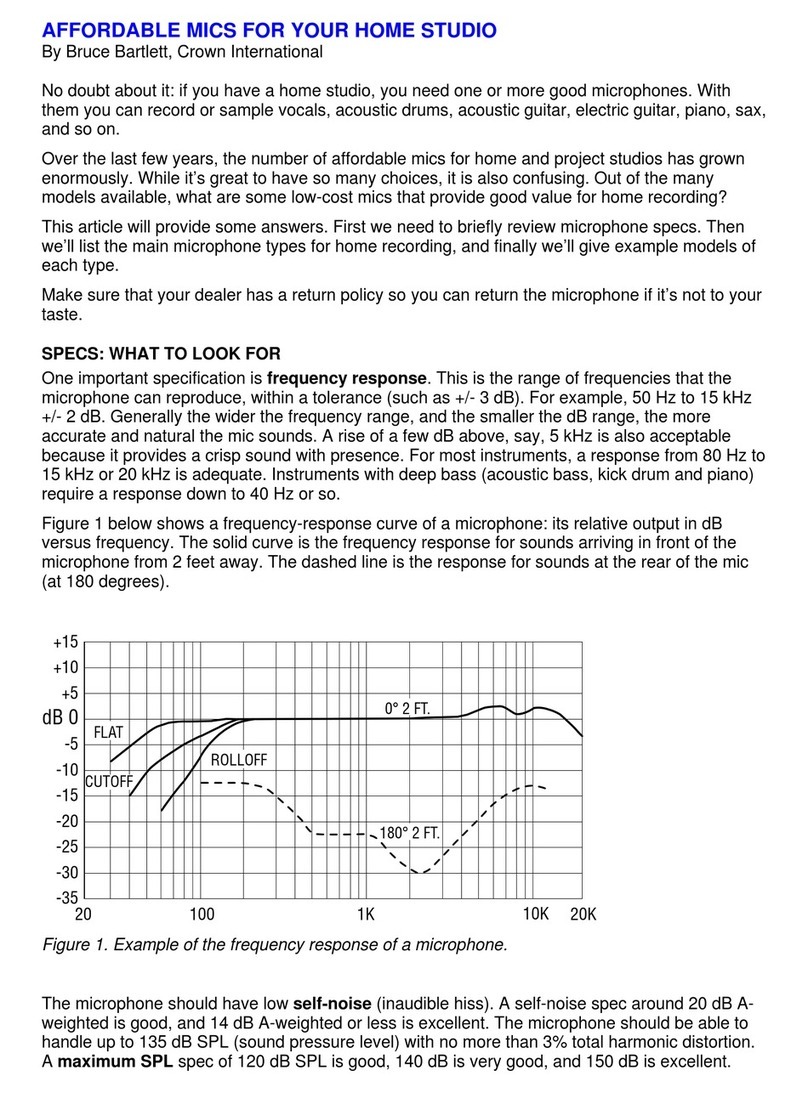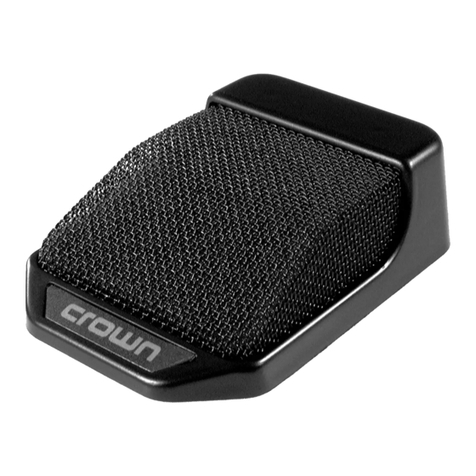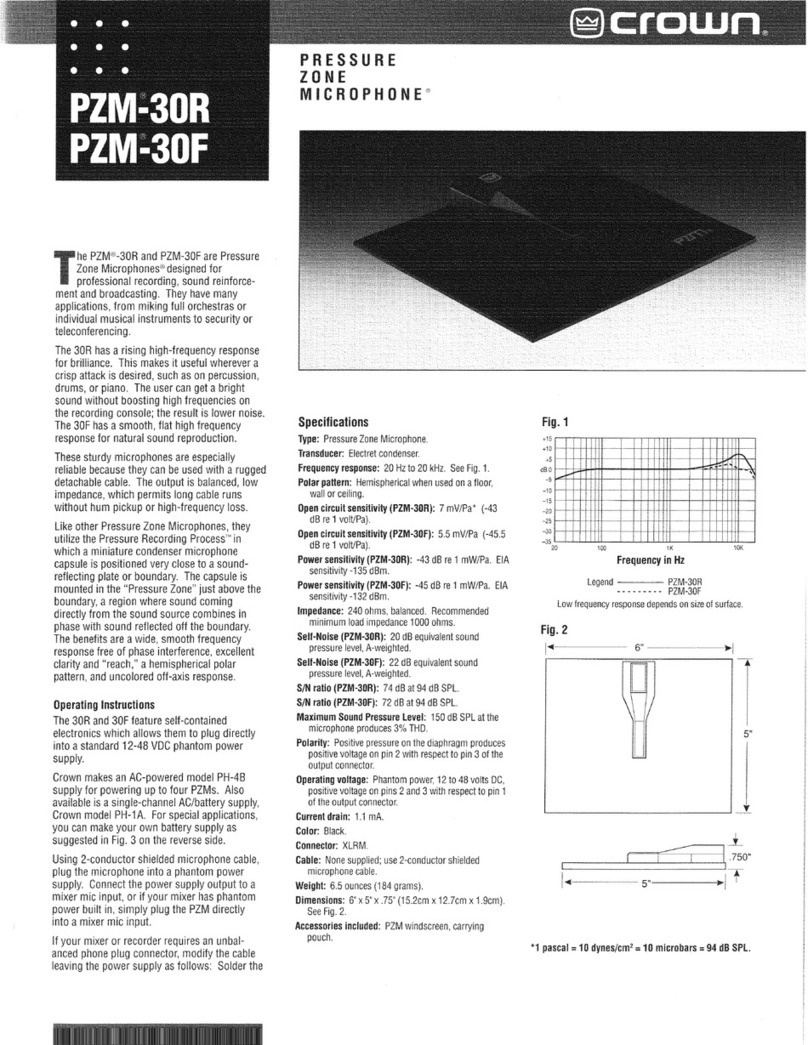CM-200A,oraPZM-30D/PZM-6Dsetto“rising”
response.Also,movethemicarounduntilyoufinda
spotwherethemonitoredsoundisbright.
Howtoachieveagoodbalance
Agoodbalanceisagoodloudnessrelationshipamong
instrumentsandvoiceinamix.Whenthebalanceis
good,noinstrumentistooloudortoosoft.Toachieve
agoodbalancewhenrecordingalargeensemblewith
oneortwomicrophones:
•Moveinstrumentsthatare tooquietclosertothe
mics,andviceversa.
•Placethemic(s)farenoughawaysothatyoudon’t
emphasizetheinstrumentsinthecenterofthe
ensemble.
•Ifyou’reusingtwomicstorecordstereo,adjustthe
microphoneanglingorspacingforagoodbalance.If
youhear a holeinthemiddlewhenusingwidely
spacedmics,addathirdmicinthecenter,pannedto
thecenter.
•Ifasoloistisperforminginfrontofanorchestra,
raiseorlowertheorchestra’smicstandtovarythe
balancebetweensoloistandorchestra.
NOTESONCROWN
MICROPHONEMODELS
CM-200A
TheCM-200Aisahandheldcondensermicrophone
withasmooth,articulatesoundquality.It’sgreatfor
drums,guitaramps,andsingingguitarists.Becauseof
itscardioidpickuppattern,theCM-200Arejects
soundsapproachingtherearofthemicrophone.
CM-700
TheCM-700isasuperb,cardioidcondensermicfor
proorsemi-prorecordingandhigh-qualitysound
reinforcement.Ruggedenoughfortheroad,the
CM-700worksequallywellforpopular music(multi-
miking)orclassicalmusic(stereoandspot-miking).
TheCM-700hasaclear,naturalsound.Self-noiseis
verylow,andthemiccanhandleextremelyloud
soundswithoutdistortion.Abassroll-offswitch,pop
filterandwindscreenareincluded.
CM-150
TheCM-150isa1⁄2-inchdiameter,omnidirectional
electret-condensermicrophone.Ithasaveryflat
responsefrom20Hzto20kHz,soitsoundsaccurate
andnatural.Itpreservesthedelicatetimbreofacous-
ticinstrumentsyetcanreproduceallthepowerofa
pipeorgan.
GLM-100
Thisminiatureomnimicoffersallthequalityand
wide-rangeresponseoflargerstudiomicrophones.
SincetheGLMissmall,itcanbeattachedtoinstru-
mentstoimproveisolationandrejectoff-micsound.
PZM-6D
ThePZM-6DisaPressureZoneMicrophone.When
suspendedoveranorchestraonaclear panel,the
PZMpracticallydisappears.Itsminiature,perma-
nentlyattachedcablealsoreducesvisualclutter.
ThePZM-6Dhasaswitchable,dualfrequencyre-
sponse:risingorflat.The“rising”positionadds
brilliance.Thismakesitusefulwherevercrispattackis
desired,suchasonpercussion,drumsorpiano.The
usercangetabrightsoundwithoutboostinghigh
frequenciesontherecordingconsole;thebenefitis
lowernoise.The“flat”positionprovidesasmooth,flat
highfrequencyresponsefornaturalsoundreproduc-
tion.
LikeotherPressureZoneMicrophones,thePZM-6D
usesthePressure RecordingProcessinwhicha
miniaturecondensermiccapsuleismountedvery
closetoasound-reflectingplateorboundary.The
capsuleisinthe“Pressure Zone”wheresoundcoming
directlyfromthesoundsourcecombinesinphase
withsoundreflectedofftheboundary.Thebenefits
areawide,smoothfrequencyresponsefreeofphase
interference,excellentclarityand“reach,”ahemi-
sphericalpolarpatternanduncoloredoff-axisre-
sponse.
PZM-30D
SameasthePZM-6Dbutlarger.Itacceptsarugged
detachablecable.
SASS-PMKII
TheSASS-P MKIIisastereomicrophoneusingPZM
technology.Theunitmakesexcellentstereorecord-
ings,hasanaturaltonalbalance,ismono-compatible
andeasytouse,andcostslessthanthecompetition.It
comeswithacarryingcaseandafulllineofaccesso-
ries.ModelSASS-P HCisthemicaloneandcostsless.
SPECIFICAPPLICATIONS
This section suggests some ways to place Crown
microphones to record various musicalinstruments.
These are just starting points to reduce the time
5







